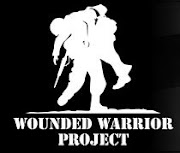
John Fernandez
John trained as an artillery officer at Fort Sill, Oklahoma, and was assigned to the 3rd Battalion, 3rd Field Artillery. He went to Kuwait with the first wave of troops in Operation Iraqi Freedom and was among those who moved into Iraq on March 19, 2003, the very first day of the war.
John’s unit was hit by indirect fire, mortars and enemy artillery, but they fought their way through. On April 3, 2003, John and his troops had just moved through the Karbala Gap and were about 30 kilometers south of Baghdad. They were firing artillery missions in support of maneuvers moving in on the Iraqi capital.
While doing reconnaissance in a Humvee, John and his men were taking shifts at watch while the others slept during the night. John heard what he first thought was one of his rocket launchers, but it was really incoming fire.
There was a horrendous explosion. When John came to, he checked out what was left of his legs and screamed, realizing his life had changed forever. But John had men to lead, even though his body was mangled. He dragged himself back to the vehicle to save his gunner who had also been wounded.
The Humvee was spewing fuel. There was fire in some places. After John dragged the gunner some distance, two other soldiers came and took him the rest of the way. Then, as they carried John away, the Humvee blew up, knocking them to the ground. The vehicle blazed, with ammunition cooking off like crazy. Finally, a helicopter flew John to a hospital in Kuwait.
“Three men died that day,” said John. “Once I got to the hospital in Kuwait, I felt pretty much lucky to be alive. I don’t feel sorry for myself.”
Recuperation: John arrived at Walter Reed Army Medical Center in Washington, D.C., on April 11, 2003. “One of the doctors explained my options, and I said, go ahead and do what you gotta do.”
John’s left foot was amputated, as was his right leg below the knee. There were 12 surgeries altogether.
John is very straightforward in describing rehabilitation: “It’s a crawl, walk, run, skip process. I wasn’t going to give up until I was able to run. It took time more than anything else. Your body has to get used to the prosthesis and the new situation.”
That may sound like it took one heck of a long time, but John walked down the aisle and danced when he married his wife, Kristi, on October 11, in a big wedding ceremony that they were unable to have when they were first married on December 27, 2002. Running came very soon after that as John trained on how to run on his new legs. And he got a major round of applause when he played lacrosse on the West Point alumni team.
Involvement with Wounded Warrior Project: So early in the war, the Wounded Warrior Project had not yet been born when 1st Lieutenant John Fernandez arrived at Walter Reed Army Medical Center. But the organization captured his imagination when he learned about it from another West Point alumnus, whose brother was among WWP’s first staff members.
Long before John ever went to work for the organization, his enthusiasm boiled over: “The Wounded Warrior Project is the main point of reference for the transition from the military hospital to civilian life. They help you cut through all the red tape. They’re a real group of people doing just the right things in terms of helping wounded soldiers.”
“From the beginning, the Wounded Warrior Project has had the right mindset and the right goals," John states. “We see on the news that a lot of troops are being killed in Iraq and Afghanistan, but many more are getting hurt over there and they must not be forgotten. Dealing with what has happened to the wounded is going to take a long time – a period of years, a lifetime really. That’s what America has to confront, and the Wounded Warrior Project is getting the work underway.”
Feelings about Helping Other Vets thru WWP: As a West Point grad, John Fernandez could have worked toward a master’s degree in business and found his way into a high paying job. Maybe he will do that someday, but right now he has a different agenda. Shortly after he became aware of the Wounded Warrior Project, he felt a powerful pull toward a new way to serve our country. Toward the end of 2006, he discontinued his graduate studies and went to work as WWP’s Director of Alumni/Outreach.





No comments:
Post a Comment